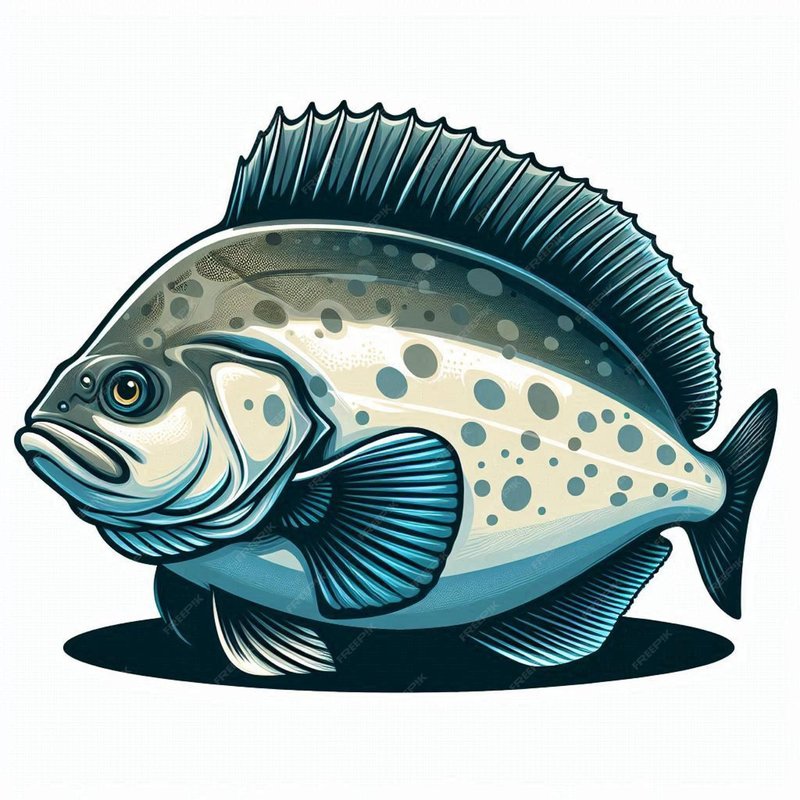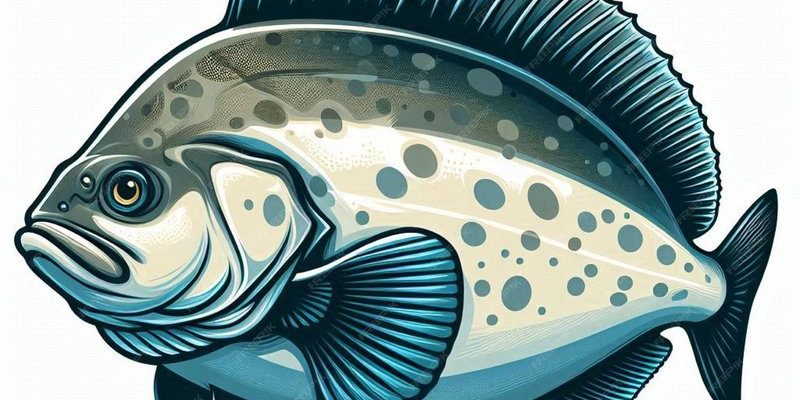
Just like how humans might use body language or tones to express feelings, halibut have their own special ways of interacting and finding their way around. Whether it’s using their keen senses or engaging in silent communication, there’s so much to learn about how they thrive in the ocean. So, how do these flat fish really navigate the vast depths of the sea and chat with each other? Let’s dive in!
How Halibut Navigate the Ocean Depths
Navigating the ocean is no small feat, especially in the expansive and often murky waters where halibut reside. Unlike fish that swim freely in schools, halibut tend to be solitary creatures. They rely heavily on their surroundings and senses to find their way. One of the key tools they use is their excellent sense of smell. Just like how you might catch a whiff of your favorite food and follow it, halibut can detect scents in the water from quite a distance. This allows them to locate food sources or even potential mates.
Another important navigation tool for halibut is their lateral line system. This is a series of sensory organs running along the sides of their bodies, allowing them to detect vibrations and movements in the water. Imagine feeling a tap on your shoulder even when you can’t see who it is. That’s similar to how halibut can sense nearby predators or prey. They use this ability to dodge danger and locate tasty meals hiding among the sea floor.
When it comes to physical navigation, halibut are quite adept at using the ocean’s currents. They can gauge the direction and strength of currents to help them maintain their position. This is particularly useful when they want to avoid strong currents while hunting or resting on the ocean floor. By being aware of their environment and utilizing their senses, halibut can expertly navigate the often chaotic underwater world.
Communication Among Halibut
So we’ve talked about how they find their way, but what about how halibut communicate with each other? Surprisingly, these fish have developed subtle ways to signal to one another without relying on any sound. One way they do this is through body language. When two halibut encounter each other, they might change their body positions or coloration slightly. This can signal anything from a territorial display to a mating ritual.
While you might not think of fish as vocal creatures, halibut can produce low-frequency sounds, but they mainly use these communication methods during specific periods, like mating. These sounds can be sensed by other halibut through their lateral lines. It’s a bit like listening to music at low volume; you may not hear every note, but you can feel the rhythm. This low-frequency communication helps them coordinate behavior and establish social dynamics in their environment.
Light plays a role in their communication, too. Halibut can change their skin color and pattern to blend in with their surroundings, but they also use color changes to convey messages to each other. If they’re excited or feel threatened, you might notice them displaying more vibrant colors. This visual signaling adds another layer to their communication toolbox.
The Role of Senses in Navigation
Halibut possess unique adaptations that enhance their senses, making navigation easier. One standout feature is their ability to see well in low light. Since they often dwell in deeper waters where sunlight doesn’t penetrate, their eyes are specially adapted to gather as much light as possible. This means they can spot both predators and prey without relying solely on bright light.
Additionally, their taste buds extend beyond the mouth, covering their skin. This means they can taste chemicals in the water as they swim, helping them identify food sources or the presence of other halibut. It’s a bit like tasting the air when you’re hungry. By utilizing these keen senses, halibut can interpret their environment more fully, ensuring they navigate their home effectively.
Halibut also have a unique ability to sense temperature changes in the water. Different areas in the ocean can have varying temperatures, affecting the availability of food and suitable habitats. By detecting these changes, halibut can move to areas that provide better opportunities for feeding or breeding. They are like seasoned travelers who know all the best spots based on the environment.
The Importance of Camouflage in Navigation
Camouflage plays a significant role in how halibut navigate and interact with their environment. One of their most remarkable features is their ability to blend in with the ocean floor. Their skin can change colors and patterns to match their surroundings, making it harder for both predators and prey to spot them. This stealthy approach allows halibut to remain hidden while they hunt or evade danger.
Imagine trying to find a hidden treasure on a sandy beach, only to discover the treasure chest is painted just like the sand. That’s how halibut use camouflage! And it doesn’t just help them avoid being eaten; it also gives them a tactical advantage when sneaking up on unsuspecting prey like small fish or crustaceans.
This ability to blend in is also crucial during mating season. When halibut display vibrant colors or patterns, it can attract potential mates. By switching between camouflage and vibrant displays, halibut not only enhance their chances of survival but also increase their odds of successful reproduction.
Challenges in Halibut Communication and Navigation
While halibut have a remarkable set of skills for navigating and communicating, they’re not without their challenges. Changes in their environment, such as pollution or climate change, can affect their water quality and food sources, making navigation more difficult. Just like how we might feel lost when our usual routes are blocked, halibut can struggle when their habitats become compromised.
Fishing practices also impact halibut populations and their ability to communicate. Overfishing disrupts their social structures and can lead to lower reproductive rates. This can make it harder for them to find mates, further jeopardizing their survival. It’s a bit like cutting off connections in a tight-knit community—things just don’t work as well.
Finally, noise pollution from boats and other human activities can hinder their ability to communicate through low-frequency sounds. Just think about trying to have a conversation in a crowded, noisy restaurant. It’s tough, right? Halibut face similar difficulties, which can disrupt their natural behaviors.
Navigating the ocean and communicating with each other is an intricate dance for halibut. From utilizing their keen senses and camouflage to developing subtle methods of body language, these fish showcase a world of complexity beneath the waves. There’s so much more to them than meets the eye, and understanding their mechanisms helps us appreciate the delicate balance of their environment.
As we continue learning about these amazing marine creatures, it’s crucial to consider how our actions can affect their lives. By maintaining healthy ocean ecosystems, we can support the halibut and many other species that depend on these vibrant environments. After all, the ocean isn’t just a home for them; it’s a treasure trove of wonders waiting for us to explore and protect.

